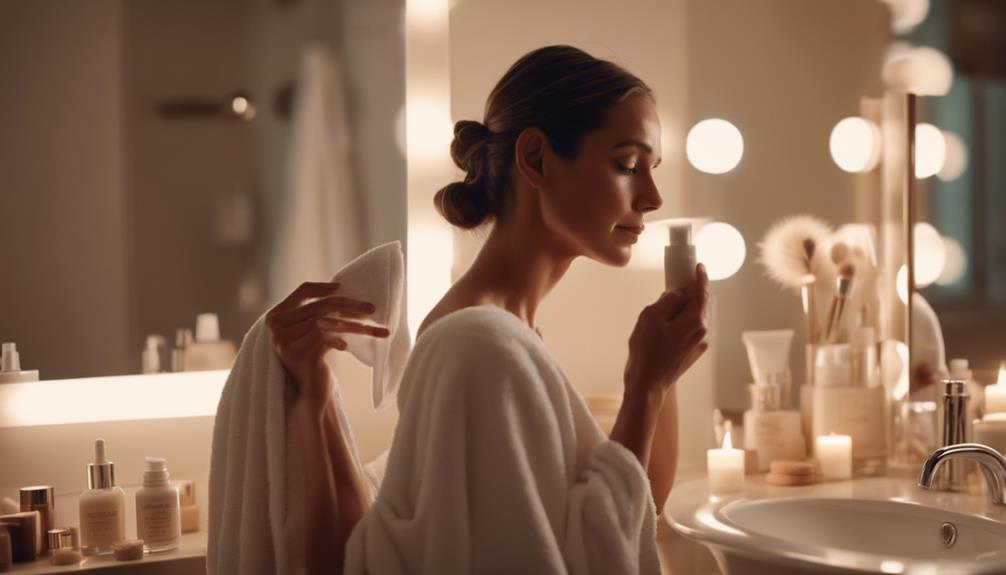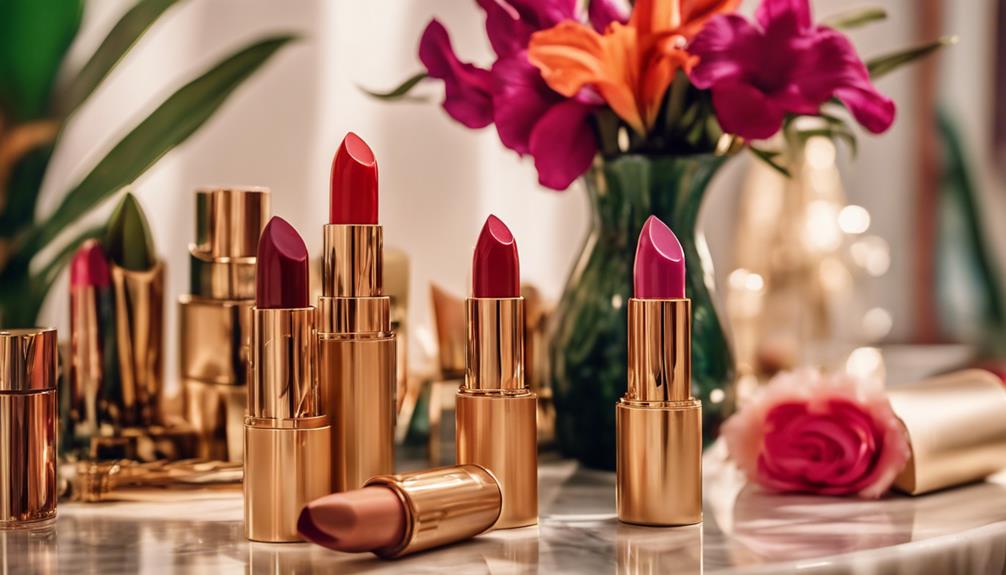So, you're thinking tanning might help you burn some calories? Well, I'm here to tell you it doesn't quite work that way! When you're sunbathing, your body's basal metabolic rate stays the same, which means no extra calorie burn. That sweat you see? It's just your body cooling down, not a fat-burning marathon. If you want to fit into those tighter clothes, you'll need to hit the track or maybe try swimming or cycling instead! But hey, tanning does have some perks, like a boost in mood and vitamin D. Stick around to discover more fun facts about tanning!
Key Takeaways
- Tanning does not significantly burn calories; the basal metabolic rate remains unchanged during tanning sessions.
- Sweating while tanning is a cooling mechanism, not an indicator of fat burning.
- Weight loss requires physical activities like jogging or swimming, not just tanning.
- Tanning offers health benefits like vitamin D production but does not aid in fitting into tighter clothing.
Caloric Burn During Tanning
Tanning doesn't considerably burn calories, so relying on it for weight loss won't yield results.
Sure, you might feel a bit warmer and sweat a little, but that's just your body cooling down, not burning fat.
While you're lounging under the sun, your basal metabolic rate stays pretty much the same. It's like waiting for a bus that never arrives!
If you want to lose those extra pounds, you'll need to get moving—think jogging, swimming, or even dancing in your living room.
Tanning might give you that sun-kissed glow, but it won't help you fit into those favorite jeans.
Tanning and Health Benefits

Exposure to UV light can boost your vitamin D production, which is essential for maintaining healthy bones and overall well-being. It's like giving your body a sunny high-five! Plus, some studies suggest that soaking up the sun can enhance your mood. But remember, while tanning has its perks, it's not a weight-loss strategy.
Here's a quick look at some health benefits of tanning:
| Benefit | Description | Importance |
|---|---|---|
| Vitamin D Boost | Helps with calcium absorption | Maintains bone health |
| Mood Enhancement | Can improve feelings of happiness | Supports mental health |
| Skin Conditions | May help with certain skin issues | Improves skin health |
| Immune Function | Moderate exposure supports immunity | Keeps you healthy |
| Enjoyment | Relaxation and sun enjoyment | Enhances overall well-being |
Health Risks of Tanning

Many people underestimate the health risks associated with tanning, which can lead to serious consequences like skin cancer and premature aging.
Sure, a golden glow might seem appealing, but that sun exposure can wreak havoc on your skin. You might end up with wrinkles, sun spots, and sagging skin—definitely not the look you want!
And let's not forget about your eyes; they can get hurt too, leading to burns or even cataracts. Plus, too much sun can mess with your immune system.
Safe Tanning Practices

To enjoy the sun safely while minimizing health risks, it's important to adopt proper tanning practices.
First, slather on a broad-spectrum sunscreen with at least SPF 30, and don't forget to reapply every two hours—yes, even if you're having fun!
Limit your sun exposure to about 15 minutes a day; think of it as the perfect excuse to take a quick break!
If you're not feeling the sun, try self-tanning lotions or sprays—they give you that golden glow without the risks.
And hey, why not combine sun time with some outdoor activities? You'll soak up the rays and burn some calories at the same time.
Alternatives for Calorie Burning

If you're looking for fun ways to burn calories, consider engaging in activities like swimming, cycling, or playing beach volleyball. Not only are these activities enjoyable, but they also get your heart pumping and help you shed those extra calories. Here's a quick table to spark some ideas:
| Activity | Calories Burned (per hour) | Fun Factor |
|---|---|---|
| Swimming | 400-700 | Splash-tastic! |
| Cycling | 300-600 | Pedal-powered! |
| Beach Volleyball | 250-450 | Set, Spike, Score! |
Frequently Asked Questions
Can I Tan Indoors Using Tanning Beds for Calorie Burn?
You can use tanning beds indoors, but don't expect calorie burn like exercise. Tanning primarily enhances skin color, not fitness. For effective calorie loss, focus on active workouts instead of relying on tanning beds.
How Long Does It Take to Get a Tan?
Imagine basking under the sun, skin glowing, and warmth enveloping you. To get a tan, it usually takes 15-30 minutes of direct sunlight, depending on your skin type and the UV intensity. Enjoy the process!
Does Skin Type Affect Tanning Efficiency?
Yes, your skin type definitely affects tanning efficiency. If you have lighter skin, you'll likely tan more slowly than those with darker skin. Always prioritize protection to minimize risks while trying to achieve your desired tan.
Can I Tan While Exercising for Better Results?
Think of exercising and tanning as two dancers in a duet. You can definitely tan while exercising, but remember, the sun won't help you burn calories; it's your movements that truly light up the calorie count.
What Are the Best Times to Tan for Maximum Effect?
To maximize tanning effectiveness, aim for midday sun, around 10 a.m. to 2 p.m., when UV rays are strongest. Remember, always use sunscreen to protect your skin while enjoying those sun-kissed moments.
Can Exfoliation Help in Burning Calories During Tanning?
Exfoliation can improve tanning results by removing dead skin cells and ensuring an even application of tanning products. While it can create the perfect tan with exfoliation, it does not directly contribute to burning calories during the tanning process. Exercise and a healthy diet are more effective for calorie burning.
Conclusion
So, while lounging in the sun might feel like a workout, it's really just a warm hug from the sunshine, not a calorie-burning fiesta.
Think of tanning like a cozy blanket; it feels nice but won't help you run a marathon.
Instead, grab your favorite outdoor activity—like biking or playing frisbee—and let the sun cheer you on while you burn those calories!
Remember, the real secret to shedding pounds is getting up and moving, not just soaking up rays!









